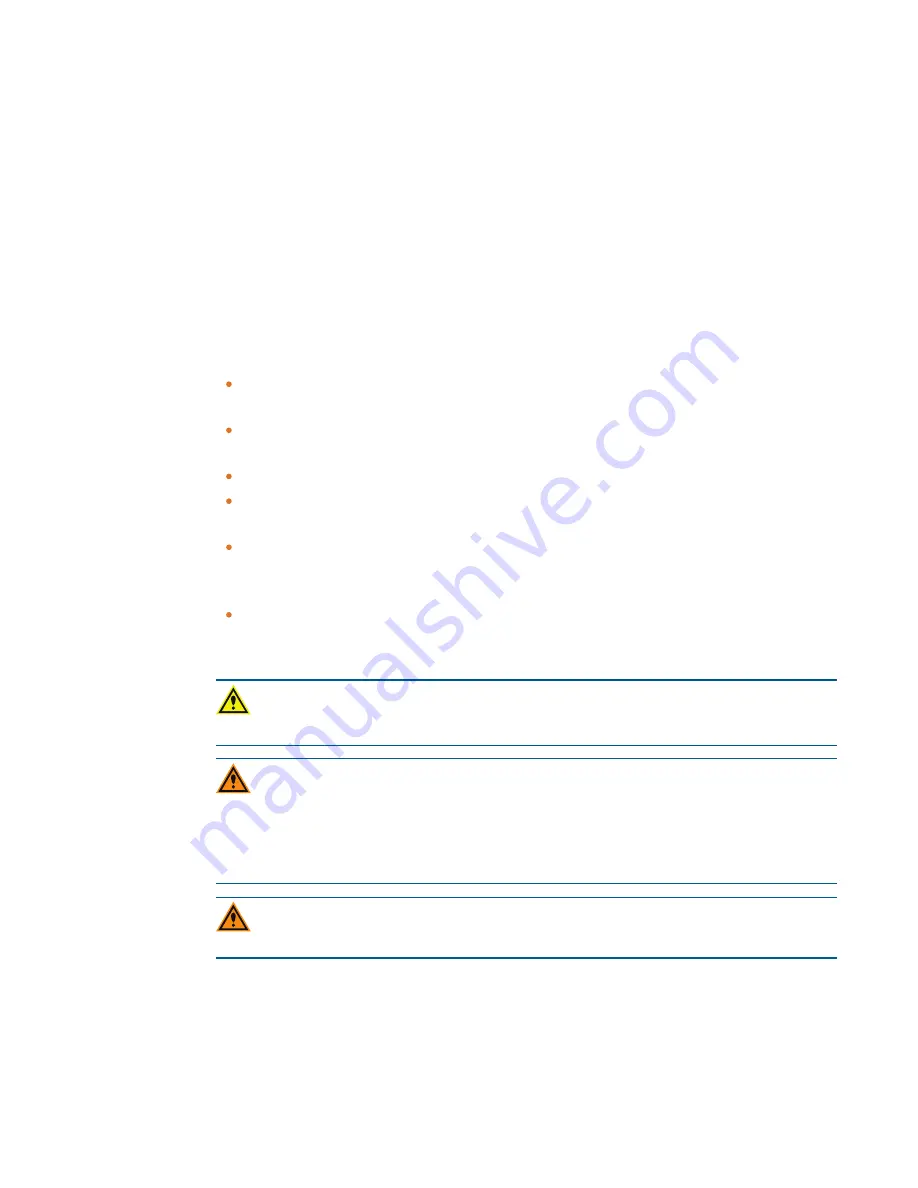
Safety Information
0112-0102 E
7
To protect against fire hazard, replace the fuses only with the same type and rating as the
original factory installed fuses.
To ensure sufficient ventilation and provide access to disconnect power from the
instrument, maintain a 20 cm to 30 cm (7.9 in. to 11.8 in.) gap between the rear of the
instrument and the wall.
Power off the instrument when not in use.
Chemical and Biological Safety
Normal operation of the instrument can involve the use of materials that are toxic,
flammable, or otherwise biologically harmful. When you use such materials, observe the
following precautions:
Handle infectious samples based on good laboratory procedures and methods to
prevent the spread of disease.
Observe all cautionary information printed on the original containers of solutions before
their use.
Dispose of all waste solutions based on the waste disposal procedures of your facility.
Operate the instrument in accordance with the instructions outlined in this guide, and
take all the required precautions when using pathological, toxic, or radioactive materials.
Splashing of liquids can occur. Take applicable safety precautions, such as using safety
glasses and wearing protective clothing, when working with potentially hazardous
liquids.
Observe the applicable cautionary procedures as defined by your safety officer when
using hazardous materials, flammable solvents, toxic, pathological, or radioactive
materials in or near a powered-up instrument.
WARNING!
Never use the instrument in an environment where potentially
damaging liquids or gases are present.
CAUTION!
Use of organic solvents can cause harm to the optics in the instrument.
Extreme caution is recommended when you use organic solvents. Always use a plate
lid and do not place a plate that contains these materials in the plate chamber for
prolonged periods of time. Damage caused by the use of incompatible or aggressive
solvents is NOT covered by the instrument warranty.
CAUTION!
When you use aggressive or corrosive reagents, you should have the plate
automatically move out of the instrument after a read.








































